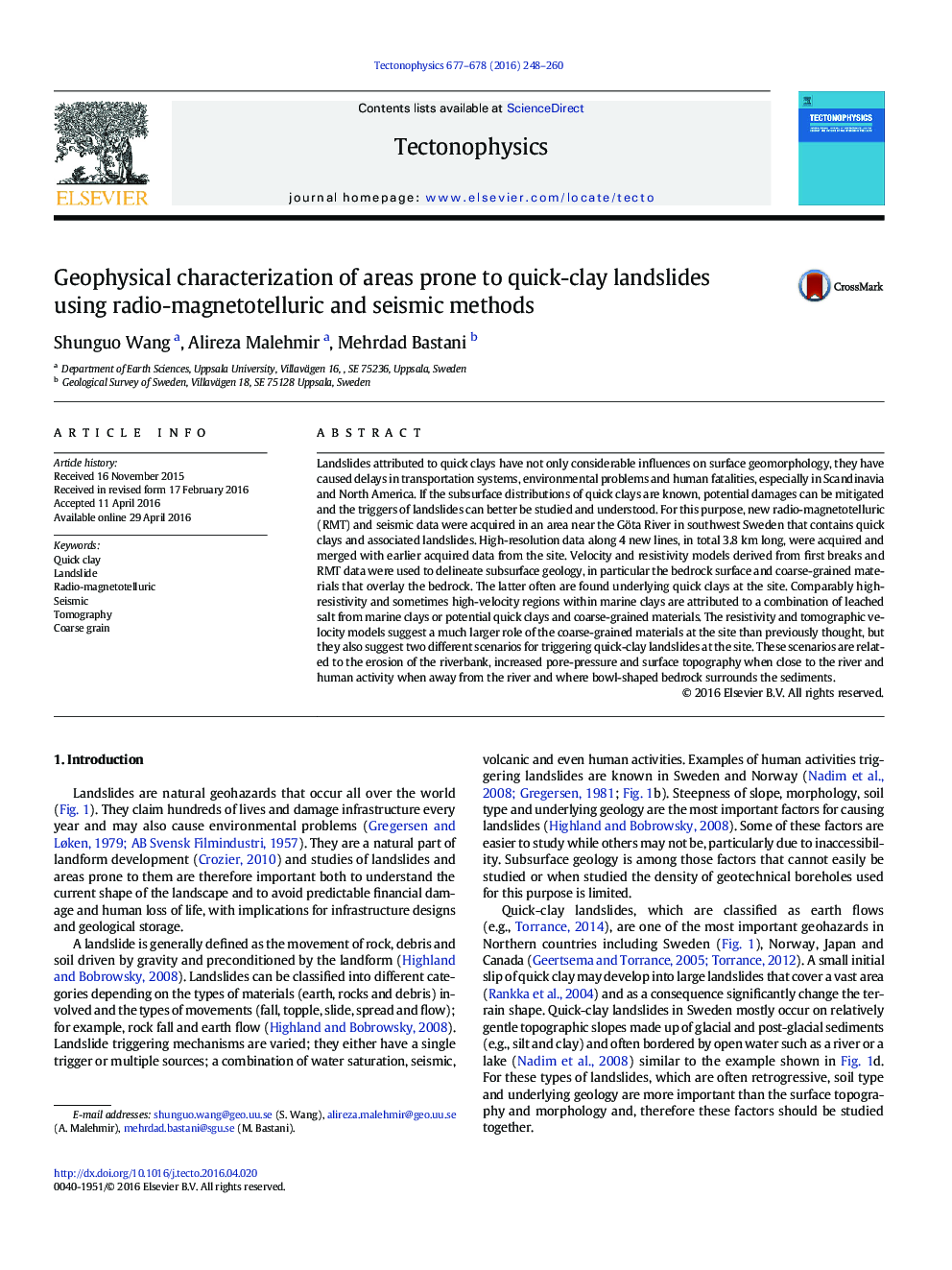| کد مقاله | کد نشریه | سال انتشار | مقاله انگلیسی | نسخه تمام متن |
|---|---|---|---|---|
| 4691358 | 1636720 | 2016 | 13 صفحه PDF | دانلود رایگان |
• High-resolution seismic and RMT data were acquired for studying quick-clay landslides.
• Results suggest that both coarse-grained materials and bedrock play key roles.
• Quick clays overlay coarse-grained materials that overlap bedrock.
• Bedrock shows at places a full bowl-shaped structure implying minimum risk of a landslide.
• Two possible scenarios triggering quick-clay landslides are presented.
Landslides attributed to quick clays have not only considerable influences on surface geomorphology, they have caused delays in transportation systems, environmental problems and human fatalities, especially in Scandinavia and North America. If the subsurface distributions of quick clays are known, potential damages can be mitigated and the triggers of landslides can better be studied and understood. For this purpose, new radio-magnetotelluric (RMT) and seismic data were acquired in an area near the Göta River in southwest Sweden that contains quick clays and associated landslides. High-resolution data along 4 new lines, in total 3.8 km long, were acquired and merged with earlier acquired data from the site. Velocity and resistivity models derived from first breaks and RMT data were used to delineate subsurface geology, in particular the bedrock surface and coarse-grained materials that overlay the bedrock. The latter often are found underlying quick clays at the site. Comparably high-resistivity and sometimes high-velocity regions within marine clays are attributed to a combination of leached salt from marine clays or potential quick clays and coarse-grained materials. The resistivity and tomographic velocity models suggest a much larger role of the coarse-grained materials at the site than previously thought, but they also suggest two different scenarios for triggering quick-clay landslides at the site. These scenarios are related to the erosion of the riverbank, increased pore-pressure and surface topography when close to the river and human activity when away from the river and where bowl-shaped bedrock surrounds the sediments.
Journal: Tectonophysics - Volumes 677–678, 23 May 2016, Pages 248–260
